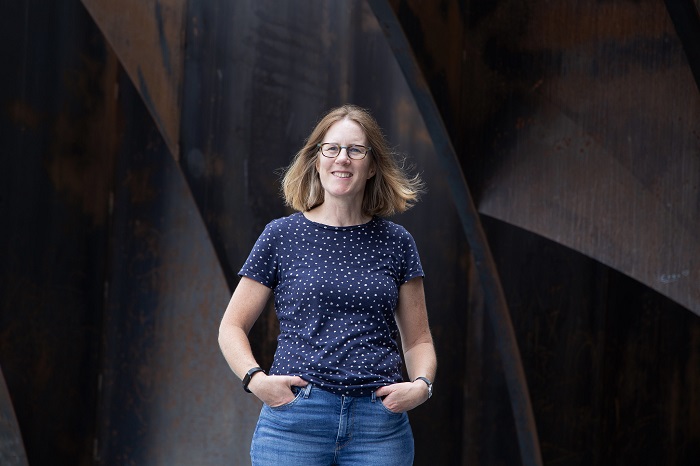
Those of you who know me were likely unsurprised when I became Chair of the SENSE Executive Committee (EC) in March 2022. I had been a member for well over ten years, attended lots of events, been a regular presenter and a SIG convener. I was also vocal at general meetings and active on the Forum. In sum, a familiar face who cared about SENSE, its members and the quality of professional English in the Netherlands.
But of course, serving on a committee has to fit in with the rest of your life. While I can just about plan EC business around my job and personal life and other volunteering commitments, I sometimes feel the frustration of not being able to do more. In an ideal world, an organization such as SENSE has someone at the helm who can lead the way, inspire others, innovate, make connections, be on top of trends in the language industry, and maintain regular contact with other SENSE volunteers. But we also need to be practical – that’s just not feasible for most people, and so – like other EC members – I do as much as I can.
Over the past year, the EC has nevertheless accomplished quite a lot. I am most proud of the fact that we are a stable team with all EC and Team Leader (TL) positions filled. It’s also good to see the EC making progress on two long-term projects that are essential to the running of SENSE but perhaps less visible to the wider membership. Firstly, the repercussions for SENSE of the WBTR legislation have required careful consideration. Discussions on this started before I joined the EC and will likely continue for several months. One major consequence is that the EC now has just five members, and this means that EC meetings have more of a focus on Society business, such as management, compliance and finances, and less on event planning for example. Outside these meetings, we get a considerable amount done online together with the leaders of the Content team, Social Media team, CPD team, SIG and Social Events team, and Website team.
The second longer-term project that is taking shape is the website – this needs a revamp but also a major update to the underlying software. Because this will be a pricy undertaking, we don’t want to make any hasty decisions, but we’re hoping to have most of the work done by the end of 2023. I’ve had contact with web support companies and web managers of other societies, for example, to get a better idea of how to approach things and support our Web Manager with this project.
What else have I been up to since becoming Chair? Well I’ve been chairing the EC meetings (held every two months), and I chaired the Annual General Meeting for members in March; I was active in finding SENSE members willing to sit on the EC or become a Team Leader; I’ve met with people from other professional societies, such as NEaT, EASE, iPED, MET, NGTV, VZV, and VViN; and I’ve helped finalize the Dutch Convenant available in our Library and commission and review an English translation of it.
I also set up a new free event for members called SENSE Orientation which we hope to hold twice a year, alternating between in person and online. Attendees can familiarize themselves with our Society and hear how to get the most out of the SENSE membership – the next session is on 2 September in Utrecht.
To summarize, the first year and a bit has gone by pretty quickly, and I’m really enjoying working together with other enthusiastic volunteers to get things done within SENSE – each in our own way of course. I’m encouraged to see that many SENSE members are once more coming along to in-person gatherings in this post-Covid era, and I hope that some will also be willing to come forward with new ideas and enthusiasm to shape the future of our Society as we adapt to changing times.
|
Blog post by: Sally Hill LinkedIn: sally-hill-nl Twitter: SciTexts |

The Chartered Institute of Editing and Proofreading (CIEP) publishes a series of guides that are free for its members and can be purchased by non-members on topics related to copy-editing and proofreading. In 2021, I took a big leap out of my comfort zone and wrote a CIEP guide on Editing Scientific and Medical Research Articles.
Overcoming imposter syndrome
I had been aware for a while that, of the many top-quality guides on editing and proofreading offered by the CIEP, none tackled the specific field of scientific and medical editing. I also knew that this was a gap I could fill, but felt pretty nervous about submitting a proposal to the Information Team because of imposter syndrome. Once I became an Advanced Professional Member of the CIEP at the end of 2020, I was fully eligible to write a guide and had no more excuses. I bit the bullet, submitted my proposal, and was both delighted and terrified when the CIEP Information Team accepted it and sent me a contract to write the guide.
Working with the CIEP
The CIEP’s Information Team were a joy to work with. They were professional and encouraging through the whole process, pointing out what needed to be improved while applauding everything I was doing right. The result was that I learnt a lot and gained much-needed self confidence. The guide went through several rounds of editing and peer review, so I was confident that the end product was sound and fit for purpose.
What to include?
CIEP guides should offer a basic introduction to the knowledge and skills needed in a particular field. My intended audience were copy-editors who work or want to work on scientific research articles, and I knew that these people would already have a scientific style guide on their bookshelf. So what else could I offer? I decided to share my experience as both a former academic who published her own research and as an experienced scientific copy-editor who helps scientists get their papers ready for peer review. For example, I gave tips on dealing with academic clients, explaining that most scientists do not know the differences between copy-editing and proofreading and that we need to use our expertise to make sure our client gets the help they really need. I also talked about how a research paper should be structured and what typically goes wrong based on the papers I have edited over the years.
The result
The end result of one year of writing and editing was more than 50 pages explaining how to help scientists overcome common problems with writing (such as using tenses correctly, dealing with common confusables, and avoiding plagiarism) and navigate the publication process (including tips on writing pre-submission enquiries, cover letters, and rebuttal letters). The guide also includes chapters on how to edit research articles (with a detailed workflow for the beginner) and how to ensure that a research paper has a logical and coherent structure (with templates for the different sections of a research paper). Many editing colleagues have been kind enough to get in touch and tell me how helpful they found the guide.
The rewards
Writing a guide for the CIEP was a very rewarding process. If you are an Advanced Professional Member of the CIEP and have an interesting idea for a guide, I strongly encourage you to get in touch with the CIEP’s information director at information@ciep.uk.
|
Blog post by: Claire Bacon Website: www.baconediting.com LinkedIn: dr-claire-bacon-397858103 |
Michael Dallas and his exceptional Van Dale supplement
Written by Paula Arellano Geoffroy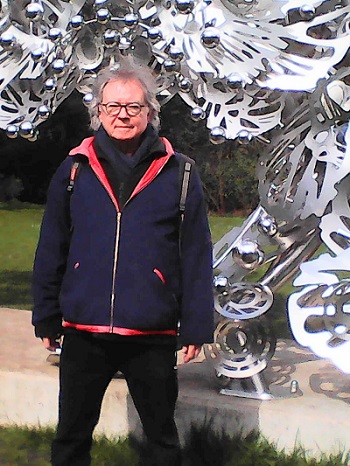 SENSE member Michael Dallas (on the left, photographed by Sheila Gogol at Beatrixpark in Amsterdam-Zuid in 2021) has been actively contributing to the Society since he joined many years ago. His numerous and informed editing and translation suggestions posted to the Forum on our website have helped many SENSE members. But his contribution goes beyond that, as he is the compiler of a supplement to the Van Dale Dutch-English dictionary, colloquially known as the ‘Van Dallas’, available in our Library. In the following interview, Michael shares with us a bit of his history and how he began compiling his extraordinary supplement.
SENSE member Michael Dallas (on the left, photographed by Sheila Gogol at Beatrixpark in Amsterdam-Zuid in 2021) has been actively contributing to the Society since he joined many years ago. His numerous and informed editing and translation suggestions posted to the Forum on our website have helped many SENSE members. But his contribution goes beyond that, as he is the compiler of a supplement to the Van Dale Dutch-English dictionary, colloquially known as the ‘Van Dallas’, available in our Library. In the following interview, Michael shares with us a bit of his history and how he began compiling his extraordinary supplement.
Can you tell us about your professional background?
I joined SENSE in 1995, shortly after I started translating and editing professionally in the social sciences and social work. I soon also developed a specialization in mental health, mainly epidemiology. All those fields had plenty of jargon that I needed to keep track of. I had previously held clerical jobs in the Universiteit van Amsterdam’s Faculty of Social Sciences, where I had gained some experience on the side working with researchers on their English publications.
I understand that you once had dual American-Dutch citizenship. What brought you to the Netherlands and what made you stay?
I decided to emigrate from the US while doing my ‘junior year abroad’ in England. I would have chosen England, Germany or Denmark as my destination, but I later made four Dutch friends in New York who persuaded me to move to Amsterdam. They met my boat at the Amsterdam Passenger Terminal and helped me learn Dutch and find housing, work and friends. From the very beginning, I planned to settle in Amsterdam for good. That was almost 50 years ago. I identify as Dutch or European, not as American. I gave up my US citizenship about ten years ago, after the Dutch banks started imposing restrictions on US citizens.
Your supplement to the Van Dale Dutch-English dictionary has more than 700 pages of original and useful Dutch terminology translated to English. Can you tell us about the genesis of this impressive list? Have you thought of publishing it?
The idea originated about 20 years ago when SENSE member Joy Burrough announced on the Forum that some of her reference books had been destroyed by a fire in her office. I pulled out my Van Dale NE (which was already falling apart) and realized how vulnerable it was. I had jotted notes down the margins of almost every page.
Although digital terminology systems already existed then, I preferred a hands-on approach. I decided to transfer all my margin notes into a Word document that could be stored externally. I had just acquired a voice recognition program, so I first dictated lists of Van Dale entries section by section, then switched to English, repeatedly said ‘move down three’, and then dictated the English translations under the Dutch words. I was surprised how smoothly that went. The original version looked much like the current one, but it had only 400 pages. I was mainly concerned with specialized jargon, but also with difficult-to-translate expressions like aansluiten op/bij.
Theoretically I could have tried to further manicure and publish the list, but that seemed like too much work and stress, so I began sharing it with colleagues. I’ve developed the habit of plucking new entries from various sources, often the SENSE Forum. Working for academics, I don’t have many rush jobs, so I have time to contemplate and note down possible translations. Many of the English terms listed are a result of ‘thinking out loud’ while translating.
You are an editor and a translator from Dutch to English who also has a Bachelor of Arts in German. Are you appreciative of multilingualism? Why?
When I obtained my BA in German in New York, I was mainly just interested in moving to Germany. In Amsterdam I earned a Bachelor's in sociology, and that was more serious. But remembering my unfulfilled ambition to live in Germany, I rented a pied-à-terre in Berlin 17 years ago, where I stay about half the time. I belong to a translators’ forum and Stammtisch. I wondered at first whether I could work in German, but in practice I’ve kept working for Dutch clients only. I no longer think I’ll ultimately settle in Berlin.
I realized the value of multilingualism when I took Latin (my first foreign language) in high school in the US. I’ve found that learning the grammar, structure and vocabulary of another language gives you tremendous insights into your native language. Since then I’ve dabbled in Spanish, French, Danish and Czech, but Dutch and German are the only foreign languages I speak fluently.
What have you found in SENSE that has made you stay a member for so long?
I’ve only held one office in SENSE, that of Membership Secretary 25 years ago, but I’ve long contributed my insights about vocabulary and rules of publication style to the Forum. In return I’ve learnt a lot from the many accomplished language professionals in SENSE, both via the Forum and at workshops and meetings. Volunteering gives me a sense of fulfilment if I believe I’m helping other people, but it also makes me more aware of what I know and do.
What do you like to do in your free time?
Nowadays I spend a good deal of my free time reading informative articles on the internet and catching up on books I’ve had on the shelves for years (e.g. I’m now reading up on Habermas). I read mostly non-fiction texts on history, society and politics. I also walk or cycle every day and travel occasionally in Europe, either alone or with friends.
|
Blog post by: Paula Arellano Geoffroy Website: paulaarellanogeoffroy.com LinkedIn: paula-arellano-geoffroy |

When I became an editor, I believed my job would mainly be spent in the study of right and wrong. Style guides and dictionaries in one hand, red pen clutched in the other, I was ready to supply grammatical and syntactical improvements. And yet, when I moved from the US to Japan and began working with Japanese companies that were writing for western audiences, I found myself spending most of my time wading through the world of subjective edits.
When editing across cultures, it becomes so much more complex than words on a page. The once-clear rules of grammar and punctuation become blurred as you switch from one version of English to another. Voice, tone, scope, and word choice are ever shifting as you consider the cultural backgrounds of both the author and the audience. How do you decide how heavy-handed to be? How do you help the author maintain the integrity of their piece while making it digestible for a foreign audience?
Unfortunately, there is no correct answer. While we can find some guidance in published literature, it is ultimately up to international editors to help the author find a successful balance for their work. For me, I’ve found that beginning with a few small things can go a long way.
1. Begin with mechanics
Does the audience use the metric system or the imperial system? American or British spelling? Adjusting the mechanics of the piece to the viewpoint of the audience can improve readability and help the author more easily connect to the intended audience.
2. Consider general knowledge
Most authors write from the standpoint of their own society’s knowledge base. The challenge is that the general knowledge of each culture is different. For example, an author may need to specify that Sir Don Bradman was an Australian cricket player when writing for American audiences or that Russell Wilson is an American football player when addressing Australian audiences. Japanese audiences will likely understand the date range of the Edo period but not that of the Irish Civil War. Helping an author bridge these knowledge gaps is essential when editing on the international level.
3. Address the goals of the author and the audience
The goals of both the author and the audience will change from piece to piece. Understanding the goals of both parties will help us successfully navigate the editing process. Is the author intending to write a text that introduces their unique cultural outlook and challenges the reader, or are they aiming to create a narrative that blends seamlessly with the audience’s worldview? Likewise, is the audience intending to learn more about a new culture or are they looking for something closer to their comfort zone?
4. Verify inclusive language
As editors, we are constantly on the lookout to avoid non-inclusive language. However, when editing internationally, we must also understand how the definition of inclusive language changes from country to country. It’s vital that we understand our audience’s inclusivity guidelines so that we can help the author avoid any unintended offenses.
As globalization continues to pull our world closer together, it becomes increasingly important for editors to be able to edit across countries and cultures. While there aren’t always clear-cut answers for this line of editing, the more we editors are able to discuss our choices, the more we can work together to ensure we are providing authors with the best edits possible.
|
Blog post by: Taylor Steed Website: taylorrsteed.contently.com LinkedIn: taylor-steed |

Those attending the SENSE 2023 Annual General Meeting this March (or reading the 2023 AGM bulletin) may have been surprised to see the announcement that the organization’s Executive Committee (EC) was being pared down to five (Chair, Treasurer, Secretary, and two Members-at-large) from eight members, with five former EC positions now designated as Team Leaders (Content Manager, Web Manager, Social Media Coordinator, SIG & Social Events Coordinator, and Continuing Professional Development Coordinator).
This change was not some draconian power grab but a move to allow the EC to focus on strategy while the Team Leaders (TLs) can focus on their respective tasks without the need to attend too many meetings, and also to better shield individual members from liability, in line with a new (well, from 2019) act called the Wet Bestuur en Toezicht Rechtspersonen (WBTR).
Compliance with the act was brought up at the 2022 AGM as well. The act applies to all associations with members (verenigingen) such as SENSE and to foundations without members (stichtingen). The WBTR’s general aim is to ensure good governance, better defined as having things run cleanly and with a minimal risk of conflict of interest and liability. The new legislation defines executive and supervisory tasks in an organization, ensures that there are provisions for dealing with EC members who can no longer serve due to illness for example, and offers a template for organizations to clarify the roles and tasks of EC members.
Under the new act, personal liability of EC members has been expanded in cases of serious maladministration, such as improper filing of accounting documents or entering into agreements that cannot be fulfilled. There is also more clarity around what constitutes individual versus group liability. In this regard, liability of SENSE has not been changed by the act, but only personal liability in case of maladministration.
What kind of liability could EC members of an organization like SENSE face? The example from last year’s meeting was a theoretical Treasurer running off with a large sum of money. Would the WBTR apply in this case? Yes, if the EC does not have clear rules and guidelines in place that would prevent the Treasurer from doing something like this, then EC members could potentially be held liable.
The WBTR also includes new rules about what to do in the event of an EC member’s absence and explicitly forbids EC members from participating in meetings or voting on issues in which they have a conflict of interest.
The EC is currently composing governance guidelines that will apply to EC members. They are also in the process of identifying the parts of the SENSE Constitution that will need to be adapted to bring them in line with the new legislation. Once complete, a draft of the updated Constitution will then be shared with SENSE members for discussion and eventually approved by the membership at a General Meeting.
------------------------------------------
Acknowledgement
Special thanks to the following contributors: Hans van Bemmelen, Sally Hill, Samuel Murray, Margreet de Roo, Curtis Barrett and Paula Arellano Geoffroy.
|
Blog post by: Anne Hodgkinson Website: rosettastonetranslations.nl Blog: bootsandbowtie.com |
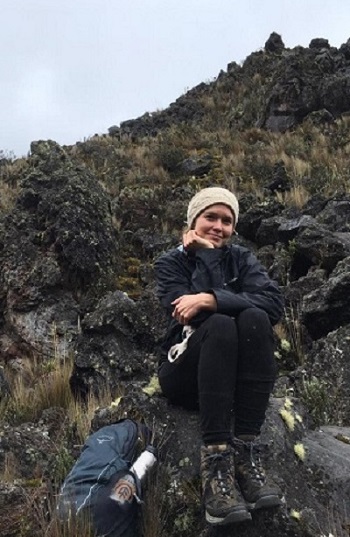 It’s always a pleasure to find people interested in writing and literature, so I reached out to fellow SENSE member Sarah Foster to invite her to share her background and interests with us and to welcome her to SENSE.
It’s always a pleasure to find people interested in writing and literature, so I reached out to fellow SENSE member Sarah Foster to invite her to share her background and interests with us and to welcome her to SENSE.
You are American, but have lived abroad for a long time. Can you tell us a bit about yourself and where you are from?
I’m originally from Virginia, but I had lived in Ecuador for most of the last ten years. I studied history and comparative literature in the US. My professional background is a mix of education, journalism, writing, and translating. I used to teach full-time. I love working with students, but I think the flexibility of freelancing is a better fit for me. I started off with a few random translating and editing jobs until I felt more confident and built up a repertoire of skills and services that I could offer. I wrote for a travel magazine, translated film scripts and subtitles, and did a few reporting projects on conservation and environmental issues in Ecuador. I recently finished a longer project developing an intercultural communication course for an NGO.
May I ask what brought you to the Netherlands and how are you getting on with Dutch?
My partner found a job here, so we decided to make the move. I was also ready for a change of pace and looking forward to more professional opportunities. I understand Dutch quite well, and I can manage most basic interactions. Watching TV shows and reading children’s books are helping me to learn more vocabulary and grammar. I hope to make some progress over the next year so that I can start to use Dutch more in professional contexts.
How did you learn about SENSE and why did you decide to join?
I have been freelancing since 2016, but I left most of my clients and professional network behind when I came to the Netherlands. I started looking for resources for Dutch freelancers. I came across SENSE and thought it would be a good way to make connections.
It must be challenging to be studying and working at the same time. How do you manage?
I’m studying in an environmental humanities graduate programme at Vrije Universiteit Amsterdam, and I also work on my freelance business. It’s been really busy, but both are important to me. Recently, I’ve done mostly fact checking, translation (Spanish-English), and editing.
I’m really enjoying my graduate school experience, and it’s helping me to specialize in environmental research. I’ve gotten to work on projects about landscapes, conservation, climate change, and environmental philosophy. If you are looking for a researcher, writer, or editor for an environment-related project, please feel free to reach out (website: sarahjanefoster.work; LinkedIn: sarah-jane-foster).
I also write poetry and nonfiction and I’d love to connect with other writers here in the Netherlands.
What do you like to do in your free time?
Well, I used to do a lot of hiking, but there aren’t many mountains around here! I’m starting to enjoy cycling, and I also like ceramics and singing.
Is there anything that you would like to share with the SENSE community?
I hope to find spaces to learn from other people’s experiences, and I’m also very happy to share my own! I’m glad to now be a part of the community.
|
Blog post by: Paula Arellano Geoffroy Website: paulaarellanogeoffroy.com LinkedIn: paula-arellano-geoffroy |
Academic copy-editing and writing in Ukraine: From censorship to enlightenment
Written by Tomas Brogan 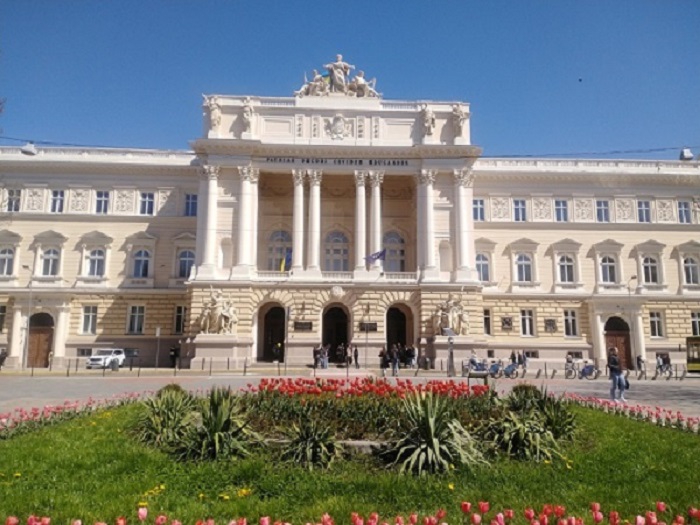
On Friday 14 April 2023, UniSIG members were joined via Zoom by Tatyana Yakhontova, professor of the Foreign Languages for Sciences department at the Ivan Franko National University of Lviv. Professor Yakhontova, who is a founder of the first Center for English Academic Writing in Ukraine and author of two textbooks on English academic writing, spoke about traditional and changing approaches to the written word in Ukraine, specifically in academia.
At the start of the meeting, the professor gave members pause for thought when she described the impact of the continuing war in Ukraine. The historic city of Lviv, though considered a relatively safe place for refugees from eastern Ukraine, is still regularly under attack. Cages erected to protect the many UNESCO sculptures in Lviv serve as a daily reminder of this context.
Professor Yakhontova spoke on the strong ‘culture of the word’ in Ukraine, and the value placed on grammatically and stylistically correct texts. Traditionally, writing was seen as a natural talent, not a skill that could be developed, and instruction was implicit. In Soviet times, copy-editing was used as a controlling, prescribing and censoring activity. Professor Yakhontova shared a personal anecdote wherein the copy editor of her first journal article drastically changed the text, and the changes made were not up for discussion. So it was in Soviet times.
After Ukraine’s declaration of independence in 1991, the world of academic writing and copy-editing began to change. There was broad support across society for a new ‘enlightening mission’ of copy editors, and the focus was placed squarely on the quality of the finished text. Notably, the original author of the text was now in a position to reject proposed changes! In the discussion that followed the talk, it was remarked how much copy-editing as a profession was valued in comparison to some other countries. Currently in Ukraine, both the copy-editing and the revision of all texts to be published are held in high regard, and almost all copy-editors are employed by publishers. This is in contrast to the freelance markets elsewhere, for example in the Netherlands and in the UK.
The reasons for these changes can be located in Ukraine’s striving for integration in Europe, the increased collaboration with US and European colleagues, and the development of applied linguistics, particularly in discourse and genre studies. In turn, these developments yield practical implications that can be used in teaching writing, and academic writing in particular.
Academic copy-editing in the English language in Ukraine is only sporadically sought out by people who work in the university system, who must publish in English ‘or perish’. However, these scholars often possess an insufficient level of English. If students are expected to write in English, for example in the case of English literature students, it is simply expected that they will know how to do so. This is also the case for many researchers, who seek writing assistance only informally. At the same time, there is increased instruction in academic writing, for example, through short training courses and writing courses aimed at doctoral students.
Concerning academic writing in the Ukrainian language, even less copy-editing support is available, which may reflect the traditional view of writing as a natural talent. At the same time, copy-editing of texts written in Ukrainian continues to be seen as a socially important activity that helps to celebrate and preserve the national language. This reflects a feeling of pride in the written word that is even more evident since the 2022 invasion.
People who attended the meeting, among whom were guests joining from outside the Netherlands, offered perspectives on English language proficiency, copy-editing and writing instruction (or lack of) in the UK, the Netherlands, Finland, South Africa, Switzerland and Kazakhstan.
|
Blog post by: Tomas Brogan LinkedIn: tomasbrogan |
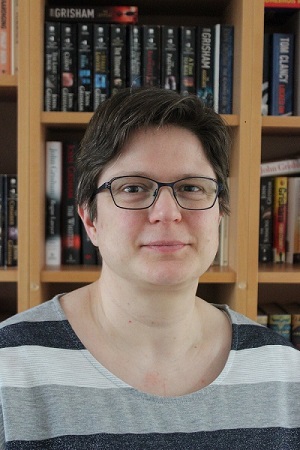 On Saturday 20 May 2023, Margreet de Roo will give a workshop for SENSE about working with MS Word. In the following interview, I ask Margreet about her workshop, what the public can expect and why it might be interesting to attend.
On Saturday 20 May 2023, Margreet de Roo will give a workshop for SENSE about working with MS Word. In the following interview, I ask Margreet about her workshop, what the public can expect and why it might be interesting to attend.
Could you tell us a little bit about your background and how you came to give training sessions on MS Word?
I have spent the last ten years working as a freelance editor and translator and I gained a lot of experience with MS Word during this time. I was curious about what else the program had to offer, so I set out to learn more. I started reading books and taking courses, applying this knowledge in my own work. I gradually expanded my experience and in 2017 I started to give workshops about MS Word myself.
Is this workshop aimed at beginners or advanced users of MS Word?
This workshop is aimed at both beginners and advanced users. Anyone who uses MS Word on a regular basis will be able to get something out of this training. Participants of my past workshops have often said they learnt so many new things, despite having worked with MS Word for years. Language professionals often don’t know all the different functions and possibilities the program provides. However, you can work so much faster and more efficiently if you know how to personalize MS Word and make use of all its options.
What will participants learn during the workshop?
We’ll focus on different topics such as how to use macros, create shortcut keys, and personalize the ribbon and the quick access toolbar (QAT). You’ll also get an introduction into the use of the proofreading software PerfectIt. The aim is to make sure you’re able to work faster and more efficiently by identifying the functions that are useful to your work and personalizing MS Word to suit your needs. On top of that, I would like to make working with MS Word more fun, and challenge you to learn more about it, and everything it has to offer, on your own. Another important thing to mention is that attendees can always contact me, even months after the workshop, if they have any questions about the things they learnt during the workshop. I will help people along if they forgot something or can’t remember how to apply some of the techniques.
Aside from improving your knowledge of MS Word and thereby improving your productivity and effectiveness as a language professional, this workshop will also be a great way to get to know colleagues and make new contacts during lunch and the different coffee breaks. There are plenty of reasons to sign up, I’d say! If you’d like to attend the workshop, please register on the SENSE website. I hope to see you at Park Plaza in Utrecht on 20 May.
|
Blog post by: Maaike Meijer LinkedIn: maaike-meijer |
Up close and personal: My first in-person Annual General Meeting
Written by Naomi Gilchrist
When I was studying for my degree in translation, several teachers pointed out the benefits of joining a professional organization, and SENSE was one of the organizations whose name came up. I was eager to discover more about SENSE, so I registered to join the 2020 Jubilee Conference as a guest. Because of the pandemic, this event was moved online. I enjoyed everything that was on offer during the conference and I learnt a lot, so I decided to go ahead and become a member.
In the following years I attended many more online SENSE events, including the Annual General Meeting (AGM) in 2021 and 2022. The AGM of 25 March 2023 was the first in-person AGM in quite some time and it was also the first large in-person event for me. I had previously spoken to some SENSE members during various Zoom meetings and workshops, so I was excited to meet everyone face to face.
The ‘meet’ of the matter
Luckily, I had been to the meeting venue at Park Plaza before, so I did not have any trouble finding the place. The doors opened at 12:00, which gave members the opportunity to meet, catch up, and discover new books in a mini book-swap before the meeting started at 13:00 sharp.
During the meeting, we discussed the minutes of the previous AGM and the reports from the Executive Committee (EC) and Team Leaders. We also looked at SENSE’s new organizational structure and voted for the election and re-election of several members. After discussing the points that came up during the ‘Any Other Business’ portion of the meeting, we took some time to thank the retiring EC members and all other volunteers for their valuable contributions.
Despite the full agenda, we managed to end the meeting right on time. The minutes of the meeting will be shared with SENSE members at a later stage.
Wrapping up the day
After the meeting concluded, many of us stayed and joined a singing workshop. There was singing (now, I don’t think the teacher was extremely impressed with the vocal prowess of most of us, but I thought we sounded pretty good!) and there was even some dancing. I think we all enjoyed being able to move around a bit after having sat down all afternoon.
Some of us then went on to have some drinks at the hotel bar and a very nice meal at an Indian restaurant. All in all, I felt it was a productive and fun day.
|
Blog post by: Naomi Gilchrist LinkedIn: naomi-gilchrist-translator |
UniSIG report: 10 February 2023 – Dealing with Chinese and Southeast Asian clients in academia
Written by Michelle Mellion 
On Friday, 10 February 2023, Kenneth Quek, a Chinese Singaporean who lives and works in Helsinki as a freelance editor, spoke online to 18 UniSIG members. Coming from Singapore, a country with the third highest population density in the world, a multicultural society and a postcolonial past, he is familiar with the need to respect cultural identities.
During his talk, he first explained how important it is for the Chinese and Southeast Asians to establish a context. Perhaps you may have heard how when Chinese students are shown a photograph of a tiger in a forest, they focus on the context, the forest behind the tiger, whereas American students focus on the tiger itself. Kenneth told us that although those coming from different cultures might be acting in good faith, these differences in perception can cause misunderstandings to occur.
Cultural attitudes have implications when conducting business, and this can be traced back to Asia’s hierarchical culture. Age-related factors such as having seniority within a company or simply sporting a white beard inherently command respect. Needs and desires are culture-bound and Kenneth recommended that you first need to convince the Chinese and Southeast Asians to allow you to help them. In line with their cultural expectations he said, ‘you do a favour to get a favour’. He mentioned that ‘there’s an assumption that we’re going to run into this person again’ so we need to establish a rapport from the very start. He added, ‘It’s important to build trust in your relationships’.
Kenneth also referred to how the postcolonial historical context has coloured Asian people’s feelings in their relationships with Westerners. He remarked that ‘there’s a lurking sense that the West doesn’t have Asia’s interests at heart’. In his own country of Singapore, the British colonizers brought in Chinese labourers in order to maintain their power, fully aware that these indentured workers could easily be controlled through their high debt. It was not until 1963 that British rule on the island ended.
Unfortunately, there was little time left to exchange each other’s experiences in editing or teaching Asian students or to discuss our own encounters with Chinese and Southeast Asian clients. One SENSE member, who teaches in Switzerland, wrote in the Zoom Chat that she knows that her Chinese PhD students would never dare to disagree with her because of her age and position. Kenneth had exclaimed earlier that ‘you’re making it harder for them by asking them what they think’. Apparently, it is wise to come up with strategies you can employ in specific educational settings as otherwise you might make Asian students, or even clients, feel uncomfortable.
We were all surprised when, at the end of his talk, he remarked that if we were to remember one take-away, it would be that food is the best way to connect with Asian people. It seems that they take great pride in their regional cuisine. Moreover, Kenneth emphasized how necessary it is to find a common ground, and by sharing and talking about food we can achieve this goal. Apparently, in today’s rapidly changing globalized world, strategies are not only needed in the classroom, but in all cultural exchanges, with the hope that misunderstandings can be avoided and that cultural boundaries can be transcended.
|
Blog post by: Michelle Mellion Website: www.totheletter.nl LinkedIn: michelle-mellion-doorewaard |








